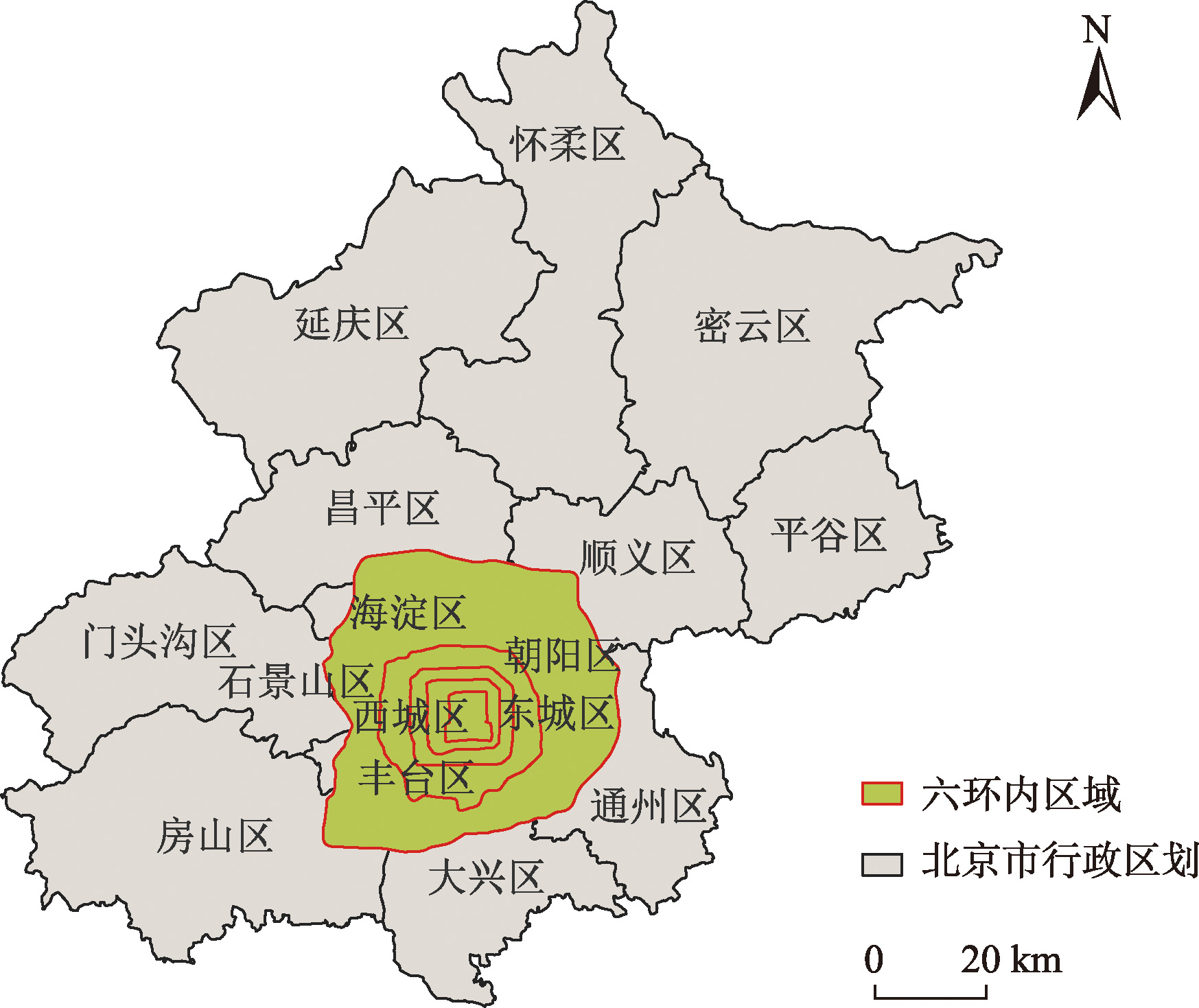

Journal of Geo-information Science >
An Analysis of Spatial Characteristics of Long Working Hours Phenomenon in Beijing Based on Mobile Signaling Data
Received date: 2025-04-10
Revised date: 2025-05-12
Online published: 2025-06-06
Supported by
Strategic Priority Research Program of the Chinese Academy of Sciences(XDB0740100-02)
National Key Research and Development Program of China(2022YFC3800803)
[Objectives] With the deepening of urbanization and intensified market competition, long working hours have become a pervasive social issue, posing challenges to both workers' physical and mental health and to urban sustainable development. Current studies on urban residents' work activities predominantly rely on questionnaire survey data, which suffer from limited sample sizes and a lack of in-depth exploration into long working hours in megacities. [Methods] This research utilized mobile signaling data from Beijing, collected between November and December 2019, to identify stay points using a threshold rule method. Residential and workplace locations were determined through a time-window approach, and users' working hours were extracted. The study then examined the spatial distribution patterns of long-working-hours employees (defined as those working over 40 hours per week) and investigated spatial characteristics across various gender and age groups. Finally, the study also explored the characteristics of long working hours in different employment clusters in Beijing. [Results] The findings reveal that 47.1% of Beijing's workforce engages in long working hours (weekly working hours ≥40 hours), with an average weekly working duration of 48.86 hours. Spatial analysis demonstrates a polycentric agglomeration pattern, concentrated in major employment hubs such as the CBD, Financial Street, Zhongguancun, and Yizhuang. Significant disparities exist across gender and age groups. Male employees work an average of 49.62 hours per week, 1.5 hours more than their female counterparts (48.12 hours). Among male age groups, those aged 20~29 have the longest average weekly working hours at 50.68 hours. In contrast, although women aged 30~39 constitute the largest proportion of the female workforce (22.13%), their average weekly working hours are the lowest, at 47.59 hours. The characteristics of overtime work in different employment clusters show a clear pattern: the CBD and Zhongguancun have a higher number of overtime workers, while Yizhuang stands out with the highest proportion at 58.0%. Wholesale and logistics hubs such as Xinfadi and Majuqiao exhibit the most intensive work schedules, with average weekly working hours exceeding 50 hours. [Conclusions] This study provides rich empirical evidence for understanding the phenomenon of long working hours in Beijing. The results offer data-driven support for optimizing labor time policies, contributing to urban sustainable development and social equity.

ZHENG Chenglong , SONG Ci , CHEN Jie . An Analysis of Spatial Characteristics of Long Working Hours Phenomenon in Beijing Based on Mobile Signaling Data[J]. Journal of Geo-information Science, 2025 , 27(6) : 1317 -1331 . DOI: 10.12082/dqxxkx.2025.250168
利益冲突:Conflicts of Interest 所有作者声明不存在利益冲突。
All authors disclose no relevant conflicts of interest.
| [1] |
|
| [2] |
|
| [3] |
聂伟, 风笑天. 996在职青年的超时工作及社会心理后果研究——基于CLDS数据的实证分析[J]. 中国青年研究, 2020(5):76-84,99.
[
|
| [4] |
|
| [5] |
中华人民共和国统计局. 中国劳动统计年鉴[M]. 北京: 中国统计出版社, 2020.
[Bureau of Statistics of the People's Republic of China. China Labour Statistical Yearbook[M]. Beijing: China Statistics Press, 2020.]
|
| [6] |
中华人民共和国国务院. 国务院关于职工工作时间的规定[EB/OL]. www.mohrss.gov.cn/xxgk2020/fdzdgknr/zcfg/fg/202011/t20201103_394935.html
[State Council of the People’s Republic of China. State Council Regulations on Working Hours of Employees] www.mohrss.gov.cn/xxgk2020/fdzdgknr/zcfg/fg/202011/t20201103_394935.html
|
| [7] |
|
| [8] |
|
| [9] |
|
| [10] |
|
| [11] |
|
| [12] |
|
| [13] |
孟续铎. 劳动者过度劳动的成因研究——一般原理与中国经验[D]. 北京: 首都经济贸易大学, 2013.
[
|
| [14] |
郭正模. 中国特色的企业超时用工能算“体面劳动”吗——超时用工及企业内部劳动力市场交易双方的行为分析[J]. 社会科学研究, 2015(4):35-40.
[
|
| [15] |
|
| [16] |
焦健, 王德, 程英. 上海市就业人群的时间利用行为特征与影响因素研究[J]. 地理研究, 2024, 43(9):2370-2391.
[
|
| [17] |
许琪. 时间都去哪儿了?——从生命历程的角度看中国男女时间利用方式的差异[J]. 妇女研究论丛, 2018(4):19-32.
[
|
| [18] |
裴韬, 刘亚溪, 郭思慧, 等. 地理大数据挖掘的本质[J]. 地理学报, 2019, 74(3):586-598.
[
|
| [19] |
刘瑜, 康朝贵, 王法辉. 大数据驱动的人类移动模式和模型研究[J]. 武汉大学学报(信息科学版), 2014, 39(6):660-666.
[
|
| [20] |
赵桐, 李泽峰, 宋柳依, 等. 基于微博大数据的北京市流动人口情绪与职住分布的关系研究[J]. 地球信息科学学报, 2022, 24(10):1898-1910.
[
|
| [21] |
顾晋源, 杨东峰. 社交媒体影响下城市休闲空间分布新特征:基于小红书打卡地与POI的对比分析[J]. 地球信息科学学报, 2024, 26(2):332-351.
[
|
| [22] |
|
| [23] |
|
| [24] |
龙瀛, 张宇, 崔承印. 利用公交刷卡数据分析北京职住关系和通勤出行[J]. 地理学报, 2012, 67(10):1339-1352.
[
|
| [25] |
申犁帆, 张纯, 李赫, 等. 城市轨道交通通勤与职住平衡状况的关系研究——基于大数据方法的北京实证分析[J]. 地理科学进展, 2019, 38(6):791-806.
[
|
| [26] |
|
| [27] |
|
| [28] |
|
| [29] |
|
| [30] |
|
| [31] |
|
| [32] |
|
| [33] |
|
| [34] |
北京市统计局, 国家统计局北京调查总队. 北京统计年鉴[M]. 北京: 中国统计出版社, 2020.
[Beijing Municipal Bureau of Statistics, National Bureau of Statistics. Beijing statistical yearbook[M]. Beijing: China Statistics Press, 2020.]
|
| [35] |
北京交通发展研究院. 2020北京市交通发展年度报告[EB/OL]. www.bjtrc.org.cn/List/index/cid/7/p/1.html
[Beijing Transport Institute. 2020 Beijing Transport Development Annual Report] www.bjtrc.org.cn/List/index/cid/7/p/1.html
|
| [36] |
|
| [37] |
张雪霞, 吴升, 赵志远, 等. 基于手机信令数据的城市小活动空间人群空间分布特征[J]. 地球信息科学学报, 2021, 23(8):1433-1445.
[
|
| [38] |
杨飞, 姜海航, 姚振兴, 等. 基于手机信令数据的出行端点识别效果评估[J]. 西南交通大学学报, 2021, 56(5):928-936.
[
|
| [39] |
张勋, 杨紫, 谭莹. 数字经济、家庭分工与性别平等[J]. 经济学(季刊), 2023, 22(1):125-141.
[
|
| [40] |
宋月萍. 照料责任的家庭内化和代际分担:父母同住对女性劳动参与的影响[J]. 人口研究, 2019, 43(3):78-89.
[
|
/
| 〈 |
|
〉 |